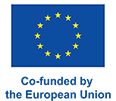

The EU-Japan Centre is pleased to start a new weekly service by publishing brief summary of the latest information from the Japanese governmental organizations & private companies/organizations. A couple of minutes reading to be informed about what is happening in Japan's policy, economy, EU-Japan relations, and innovation.
*Information is deemed correct at the time of release.
Promoting GX in the Sake industry with high vacuum technology
Inter Holdings announced on November 10 that it has begun a demonstration experiment with the participation of five sake breweries across Japan to promote the green transformation of sake breweries nationwide using ``vacuum sake.'' The company has the world's only patented ultra-vacuum technology with a vacuum rate of 99.5%. The demonstration experiment will explore specific issues related to operations and distribution at sake breweries and how to solve them, with the aim of realizing the supply of sake in vacuum pouch containers. Through this, they will examine the usefulness of new containers, including new ways to use them instead of bottles, as well as significant reductions in logistics costs and CO2 emissions due to lighter loads.
Additionally, from the same day, it started crowdfunding to offer general consumers the experience of “maintaining freshness to the last drop and enjoying the deliciousness of freshly opened sake every day'' thanks to their unique vacuum check valve. In the future, the company plans to develop vacuum pouch filling machines specifically for sake breweries and expand sales channels overseas. The first goal is to have approximately 100 sake breweries participate, which is about 10% of the approximately 1,400 sake breweries across Japan, by 2024.
Domestic consumption of Japanese sake is on the decline, and the company faces challenges such as bottle manufacturers discontinuing production due to a sharp drop in demand for bottled products, bottle collection companies going out of business one after another, and soaring transportation costs. On the one hand, there is a growing trend to enjoy sake around the world, including in overseas Japanese restaurants, but the current situation is that they are not able to keep up with the trend.
INTER HOLDINGS press release in PRTIMES (in Japanese)
https://prtimes.jp/main/html/rd/p/000000017.000058890.html
Yokohama Port visualizes exhaust gas from ships
On November 8, the City of Yokohama announced that it will begin an initiative to visualize exhaust gas from ships at Yokohama Port, in preparation for the creation of a Carbon Neutral Port (CNP). In this initiative, the Maritime Emission Portal (MEP), an exhaust gas detection system developed by Australian company RightShip, will be used for the first time in a Japanese port. MEP, developed by Lightship, is a platform for tracking and monitoring emissions and environmental impact in the shipping industry. By combining ship Automatic Identification System (AIS) data with RightShip's ship insight data that the company has accumulated over 20 years, it will accurately understand and visualize ship emissions. RightShip was founded in 2001 and currently, more than 800 companies around the world use the company's due diligence, environmental and inspection services.
Yokohama City has adopted a unique estimation method in order to form a "Green Shipping Corridor" that aims to decarbonize the global supply chain by collaborating with overseas ports. On the other hand, in order to proceed with the formation of a "Green Shipping Corridor," it is necessary to collaborate with advanced overseas ports such as the Port of Los Angeles, and it is essential to create a system that can quantitatively compare exhaust gases and verify estimated values. Given these circumstances, the city adopted MEP, the only system currently available.
Yokohama city press release in PRTIMES (in Japanese):
https://prtimes.jp/main/html/rd/p/000001252.000013670.html
Japanese government to issue “GX Economic Transition Bonds” framework receives international certification
On November 7, the government held the Green Transformation (GX) Implementation Council to consider necessary measures toward decarbonization. At this meeting, it was reported that the certification (second-party opinion) has been obtained.by two evaluation agencies, DNV (Det Norske Veritas) overseas and JCR (Japan Credit Rating Agency) in Japan which examined the compliance of GX Economic Transition Bonds to be issued within this fiscal year.
GX Economic Transition Bonds will provide support worth JP\ 20 trillion over the next 10 years. As a measure to promote investment that integrates regulation and support, support will be provided over multiple years for innovative research and development and capital investment related to energy decarbonization and industrial structural transformation. Regarding the issuance of internationally certified GX Economic Transition Bonds that will begin in FS 2023, Prime Minister Kishida said, “GX Economic Transition Bonds are expected to serve as a catalyst for similar initiatives in industry and Asia. This will be an extremely important foundation for attracting global funds for GX investment, which is estimated to amount to JP¥ 4,000 trillion by 2050, especially in Asia."
Prime Minister’s Office website (in Japanese):
https://www.kantei.go.jp/jp/101_kishida/actions/202311/07gx.html
Asia-Pacific Airlines Association aims to increase recycled fuel ratio to 5% in 2030
Asia-Pacific Airlines Association (AAPA) announced that it held the annual meeting in Singapore on November 10, and its 14 member airlines have set a goal of replacing 5% of their fuel with environmentally friendly recycled aviation fuel (SAF) by 2030. SAF is made from waste oil and plants and is seen as a trump card for the aviation industry to achieve its greenhouse gas reduction goals. However, production volumes are still low and the price is significantly higher than existing jet fuels, which are obstacles to expanding its use.
The International Air Transport Association (IATA) has already adopted a goal of reducing greenhouse gas emissions to virtually zero by 2050. However, there are also differences in temperature between emerging and developed countries. At the AAPA general meeting, there was an opinion that the ability to invest in environmental sustainability initiatives depends on the stage of development of a country,'' so the feasibility of 5% to 2030 is unclear. Japan Airlines and All Nippon Airways are also members of AAPA.
AAPA website:
https://www.aapairlines.org/wp-content/uploads/2023/11/AAPA_PR_Issue14_AP67_Resolutions_10Nov23.pdf
The number of foreign visitors to Japan in October was 2.51 million, exceeding the number for the same month in 2019 for the first time since the pandemic
The Japan National Tourism Organization (JNTO) announced on November 15 that the number of foreign visitors to Japan in October was 2,516,500 (estimated). This is the first time since the spread of the CODID-19 infection that it has exceeded the results for the same month in 2019. The number of visitors to Japan from South Korea and the United States increased compared to 2019, reaching a record high for October in 14 out of 23 countries and regions. By country/region, South Korea had the largest number of visitors to Japan, with 631,100 visitors, approximately 3.2 times the number in 2019. Next was Taiwan with an increase of 2.7% from the previous year to 424,800, followed by China with a double-digit decrease of 64.9% from the previous year with 256,300 and the United States with an increase of 38.2% from the previous year to 211,900.
JNTO website (in Japanese):
https://www.jnto.go.jp/statistics/data/20231115_monthly.pdf
NEOS collaborates with France's Air Liquide on hydrogen business
ENEOS announced on November 15 that it will collaborate with Air Liquide, a leading French industrial gas company, in the hydrogen business. ENEOS will consider participating in Air Liquide's hydrogen production plan and jointly developing large-scale hydrogen liquefaction facilities. They will work together to build a value chain in each field, from hydrogen production to distribution and sales. Air Liquide will work on large-scale hydrogen production projects in Europe, as well as the United States and Australia. It has strengths in liquefaction technology for transporting hydrogen, and operates hydrogen stations around the world, including Japan. ENEOS has set a goal of procuring 250,000 tons of hydrogen per year in 2030, and the two companies judged to be highly complementary. The two companies will also seek cooperation in reducing the costs of installing and operating hydrogen stations.
ENEOS website:
https://www.eneos.co.jp/english/newsrelease/2023/pdf/20231115_01.pdf
Daikin uses CO2 to generate synthetic resin raw materials
Daikin Industries announced on November 15 that it has jointly demonstrated technology with Doshisha University to reuse carbon dioxide (CO2) to produce acetylene, which is used as a raw material for synthetic resins and for welding metals. Carbide, the main raw material for acetylene, was synthesized by electrolyzing CO2 in a high-temperature molten salt. Aiming to be adopted at thermal power plants, etc., it will proceed with expansion of scale and consideration of equipment installation.
Acetylene is manufactured by heating coke and limestone at high temperatures, which produces a large amount of CO2 emissions. If acetylene can be produced by reacting carbide made from recycled CO2 with water, it could contribute to decarbonization. In joint research with Doshisha University, it demonstrated the recovery efficiency could be increased to nearly 80% by dividing electrolysis into two stages. The technology is currently in the basic research stage, but it is expected to put it into practical use as early as 2030.
Daikin website (in Japanese):
https://www.daikin.co.jp/press/2023/20231115
IHI developed large-capacity recirculation device for aircraft fuel cells
On November 13, IHI announced that it has developed a large-capacity recirculation device (electric hydrogen turbo blower) for aircraft fuel cells, which is the highest in the world, together with Sanei Kikai, and has successfully conducted a demonstration operation. The newly developed electric hydrogen turbo blower is a device that collects a large amount of hydrogen, including water vapor, that is emitted unreacted during fuel cell power generation and recirculates it to the fuel electrode.
Aircraft fuel cells are required to have a capacity exceeding 400kW. Conventional small blowers require multiple units to be operated in parallel, but with this device, this can be done with just one unit. The company says that this result will be useful not only for aircraft, but also for the development of ships and large trucks as fuel cell mobility, which is expected to have higher output. In addition to developing this device, the company is currently developing high-output electric motors for aircraft propulsion and electric turbo compressors that supply air to fuel cells. The aim is to commercialize hydrogen aircraft in the 2030s.
IHI website:
https://www.ihi.co.jp/en/all_news/2023/technology/1200417_3531.html
The EU-Japan Centre currently produces 5 newsletters :









